|
|
Post by Pat on Aug 29, 2013 10:59:15 GMT -5
That is so neat!
|
|
grayfingers
Cave Dweller 
Member since November 2007
Posts: 4,575 
|
Post by grayfingers on Aug 29, 2013 11:00:01 GMT -5
Just my opinion, from the studying I have done and looking at the agates I have collected I believe that pockets and cavities left behind by both the dying trees and hot lava are where they formed. Some are obviously marked with lava impressions such as would be in a air pocket, while others are more smooth with the little semi-circles in the skin. Some of those are likely wood. I think unless a piece is an obvious limb cast, it is really a guessing game as to what was wood or not.
|
|
Fossilman
Cave Dweller 
Member since January 2009
Posts: 20,718 
|
Post by Fossilman on Aug 29, 2013 11:29:56 GMT -5
Ok,I found this little guy around the Billings,Montana area in the Yellowstone River a few years back.... To me its half petwood and Montana agate. But after seeing the pics and people voice-ing their opinions on the subject,I'm thinking its petwood with some limbcast...........But also I can see some Montana agate in it too....Odd!!! 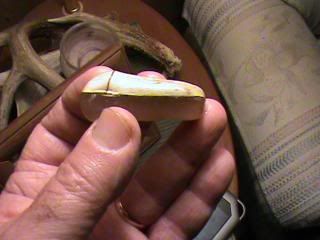 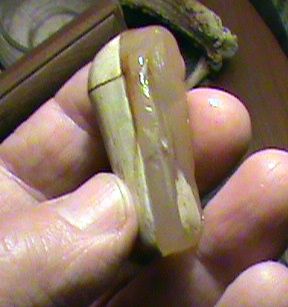 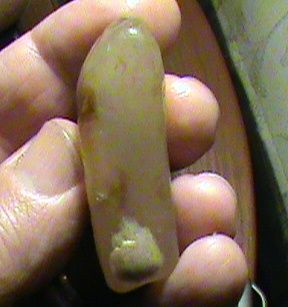 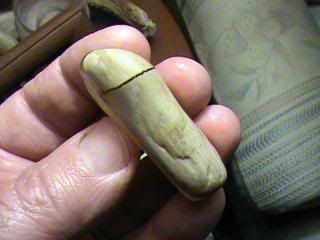 |
|
Fossilman
Cave Dweller 
Member since January 2009
Posts: 20,718 
|
Post by Fossilman on Aug 29, 2013 11:34:39 GMT -5
That Yellowstone River is full of mystery to say the least......I've talked with the Harmons and they say the same thing...(If you ever met the older man,be prepared to spend a few hours talking to him,he is a yakker)..LOL
Now I'm wishing I could have taken photos of my Uncles with their Montana agate finds in the 60's...Nothing now days even holds a candle to what they found and prepared with Montana agates!!!
|
|
Fossilman
Cave Dweller 
Member since January 2009
Posts: 20,718 
|
Post by Fossilman on Aug 29, 2013 11:41:00 GMT -5
here is my river tumbled montana petwood limbcast with built in thumb hold so you dont drop it. I think thats the right description. 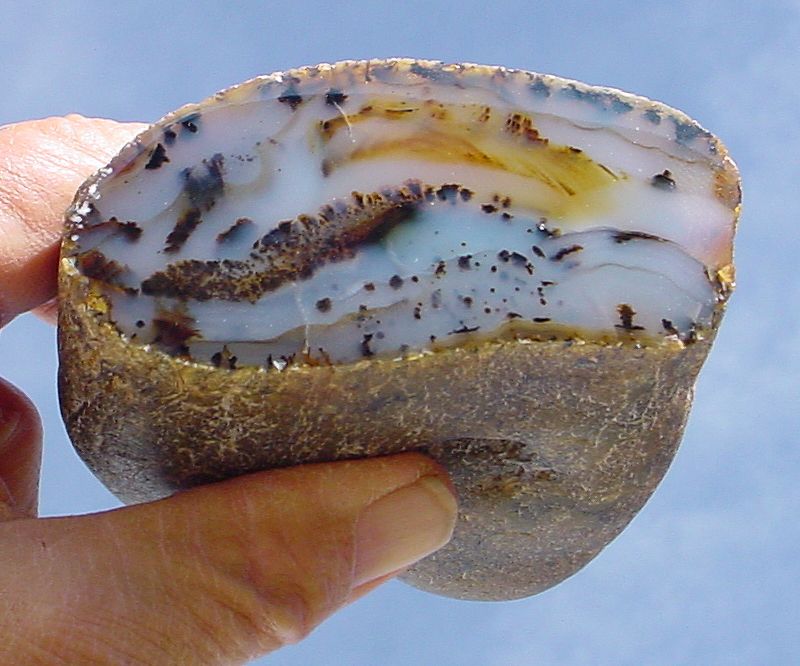 Ok,so let me get this right...........All the clear blue Montanas are petwood limbcast? The darker ones are Montana agate?? Clyde the one we cut up,must have been a petwood limbcast..... Not to start an arguement buddy,but to me that just looks like a Montana agate (A nice one too).... Just trying to understand,this old dog still likes to learn...........Thumbs up! |
|
bhiatt
fully equipped rock polisher
  
Member since July 2012
Posts: 1,532
|
Post by bhiatt on Aug 30, 2013 14:03:16 GMT -5
The blue like the one I have is a less common color. It started out as a piece of wood, then turned into a limbcast and was tumbled down the Yellowstone River. There are different color variations of montana agates but all in all they are the same thing, tumbled limbcasts, even though they just look like a rock they were once a piece of wood. The flat ones like the one I showed are a little harder to find, from what I was told. Same with oregon limbcast.
|
|
grayfingers
Cave Dweller 
Member since November 2007
Posts: 4,575 
|
Post by grayfingers on Aug 30, 2013 14:25:09 GMT -5
I think this excerpt states the scenario that I believe to be correct. Rest of article is good too, with some pics. . . ." The Montana Moss Agates formed over 65 mission years ago as volcanoes began erupting along the eastern front of what is now the Rocky Mountains. For millions of years massive lava flows buried the land including entire forests. Sometimes wood remained and was mineralized to become petrified wood and sometimes only the impression of the wood remained and became what is called a limb cast. Most agates from around the world including the Montana Moss Agates were formed within cavities and gas pockets within the lava. Most of these cavities were caused by trapped steam and gasses trying to escape through the lava as the lava cooled. Mineral water with silica (SiO2) flowed in and out of these cavities leaving behind layer after layer of agate. Between 40 and 50 million years ago the central Montana Mountains were forming. The lifting and shifting movement of the continental plate caused the break up of the original lava beds containing the agate nodules, limb casts and petrified wood. For tens of millions of years the harder agates eroded out of the softer basalt. During the last 2 million years glaciers and rivers carried the agates east along a wide basin, where the Yellowstone River now flows.". . . www.agate-beach.com/page/915087 |
|